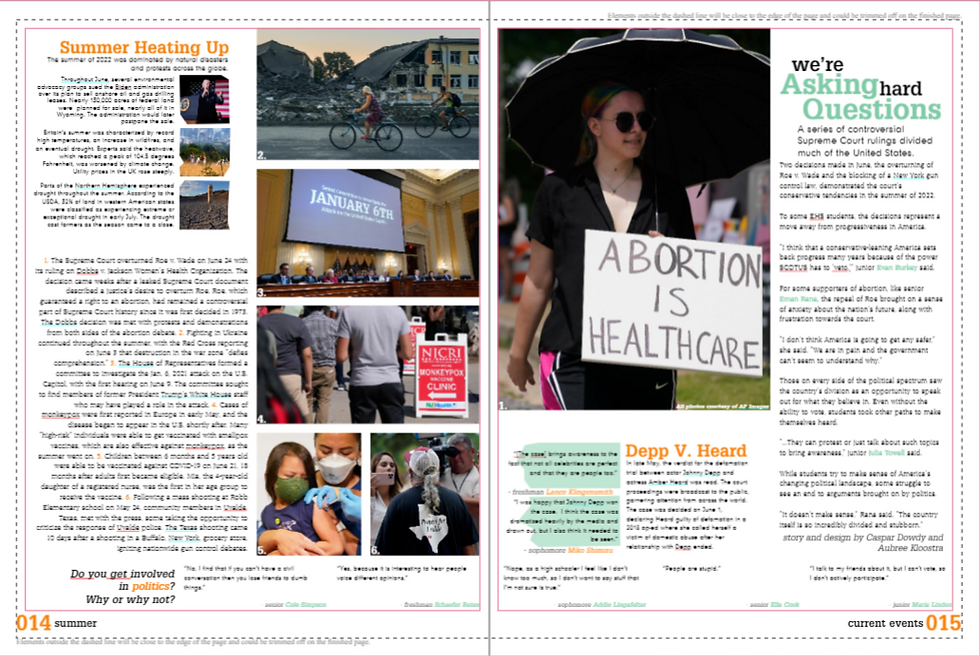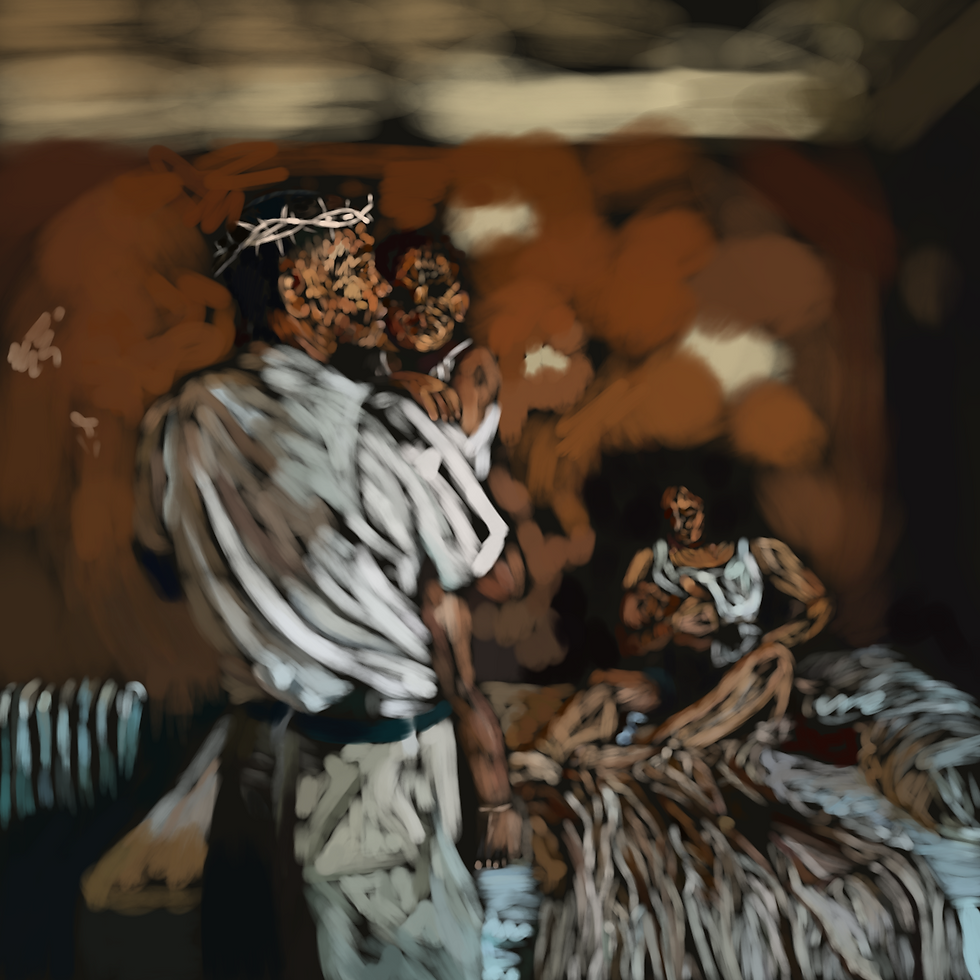
An album cover re-draw I created to help a classmate avoid copyright infringement in an article for The Claw.
law + ethics
For the most part, in my time with this program, I've been lucky to not have to worry too often about my rights as a student journalist. While our school's administration practices prior review, reading each article in The Claw and checking those that have been flagged as potentially controversial before the issue is sent to print, I've never seen any of our pieces be restrained. I've had chances to exercise many of the same rights that professional journalists rely on, attending public meetings and combing through court records in the newsgathering process.
WHEN TO KEEP PURSUING A STORY
At the start of last school year, a string of Southern Illinois school districts had been faced with lawsuits regarding mask and vaccine mandates. When Edwardsville and nearby Triad school districts became the latest defendants, our staff considered how to approach the topic in an article. I was encouraged to take the story after some Illinois teachers unions spoke out against the lawsuits.
After researching the lawsuit and statements from the unions, I reached out to union representatives at EHS over email, asking them to share their experience with the situation. Both teachers responded, declining to comment out of concern that doing so could cause problems between staff members or complicate the union's role in the lawsuit. In one case, I was told that there were too many potential issues to warrant my completion of the article.
I was worried that I wouldn't be able to publish my article by that Friday, but I knew I wasn't going to be able to get any interviews from people involved in the story, and I knew it was a topic my peers would want to know more about, as information about the lawsuit had been spreading at school via gossip and screenshots of court records. To finish the piece, I chose to use more general sources, like official statements from our district and teachers union. I briefly acknowledged the situation at the end of the piece in order to be transparent about my use of sources.
Fellow staffers and I took the time to read publicly-available court documents related to the case, and while I used the information I gathered from them to help me complete the article, I chose to leave out one detail: the name of the teacher at EHS who was involved. There were eleven teachers involved in the lawsuit between the two districts, but only one taught at my high school. While the names of plaintiffs were available to the public, I realized that singling out a teacher, albeit entirely unintentionally, could make my article be received more like another source of gossip than the factual response to students' questions that I had intended it to be.
WHEN A STORY IDEA ISN'T WORTH IT
A few months ago, an EHS student was arrested after police were made aware of threats the student had made towards our school. A few days later, as we were planning that week's Tiger Times Online budget, the arrest kept creeping in to our conversations. It had been reported on in our local newspaper, and most people knew who the responsible student was.
While all of this was public information, we made a firm decision to avoid reporting on the situation. The student had just turned 18, the party that informed police was anonymous and the process of reaching out to sources had the potential to interfere with an ongoing trial. There was so much we didn't know, and still don't know, about the situation that reporting on it would risk being inaccurate or feeding into rumors.
copyright
GIVING CREDIT
One of the easiest things our publications do to promote ethical reporting is crediting sources. Often, this means crediting the Associated Press when we use an image in yearbook or journalism, but it also means crediting fellow students when they contribute their work or identifying the source of data. Below are some examples of how I've credited the work of others in my publications.




Included in this gallery: an art piece where I chose to credit the creators of free stock images in the caption, a yearbook page that credits the Associated Press for the images we used, another yearbook page that credits student photographers and a chart I made for my enterprise project that credits a research foundation.
As I mentioned in my photojournalism and design sections, these yearbook pages also provide examples of my caption-writing and layout skills.
DOING IT YOURSELF
Most of the time, when I create an illustration to accompany a piece by myself or a classmate, it's because that artistic touch was planned from the beginning. Sometimes, though, I make art because it seems like the only option.
In the December issue of The Claw, one of my classmates wanted to write a review of some of her favorite albums from 2022. As I was helping our staff design their spreads, I noticed that she had devoted much more space to images than I'd expected. She wanted to have album covers on the page, but we didn't want to use images that weren't ours. We proposed a few other options, and shut them down: there wouldn't be pictures of some of these less-popular artists on AP Images and we didn't know anyone who owned all of the albums so we could take pictures of them. With only a few days left until our deadline, I sat down and re-created eight different album covers in one day, with a loose artistic style that would still look good scaled down to fit her layout. The unplanned art ended up appealing to our readers, and it drew more people to myclassmate's piece.




